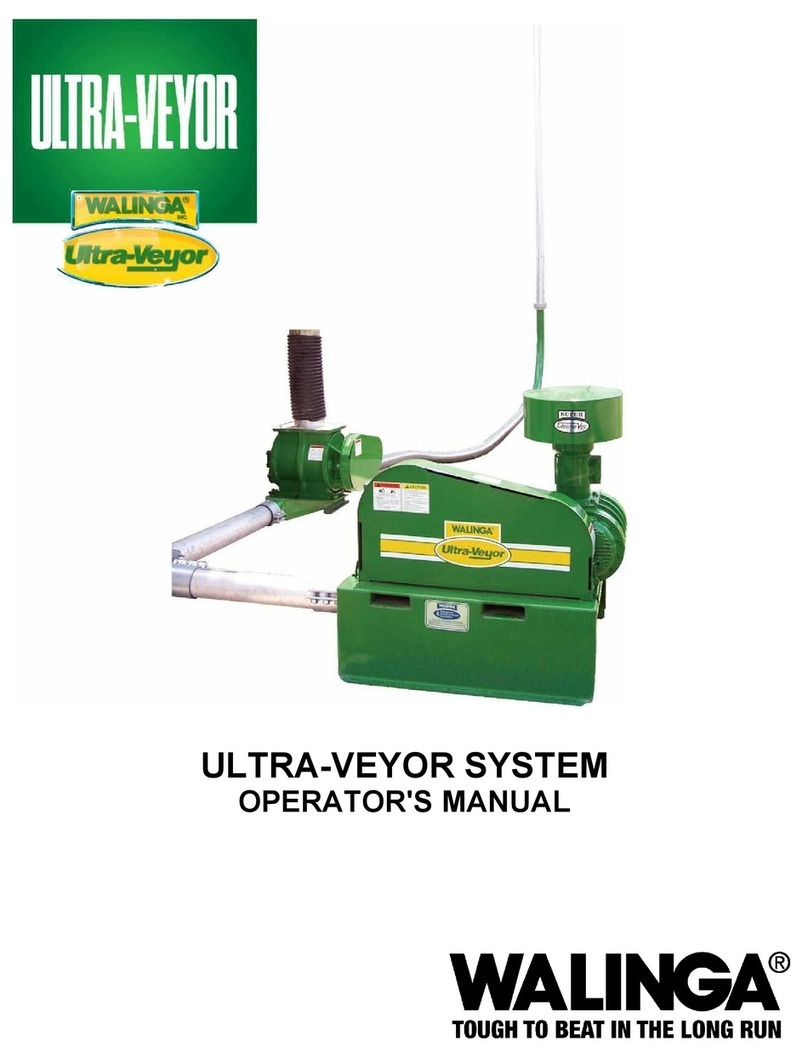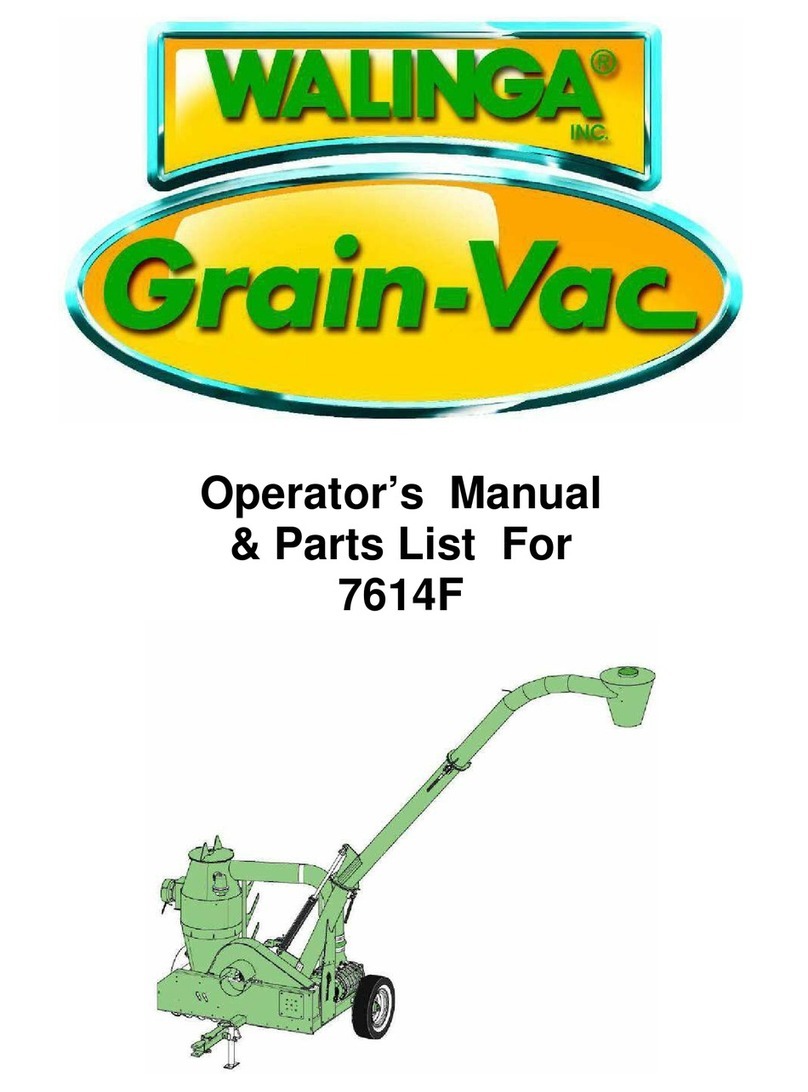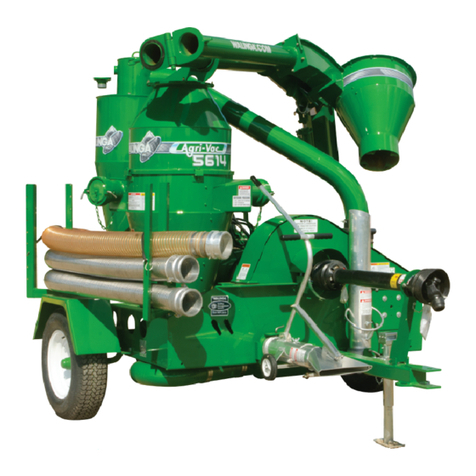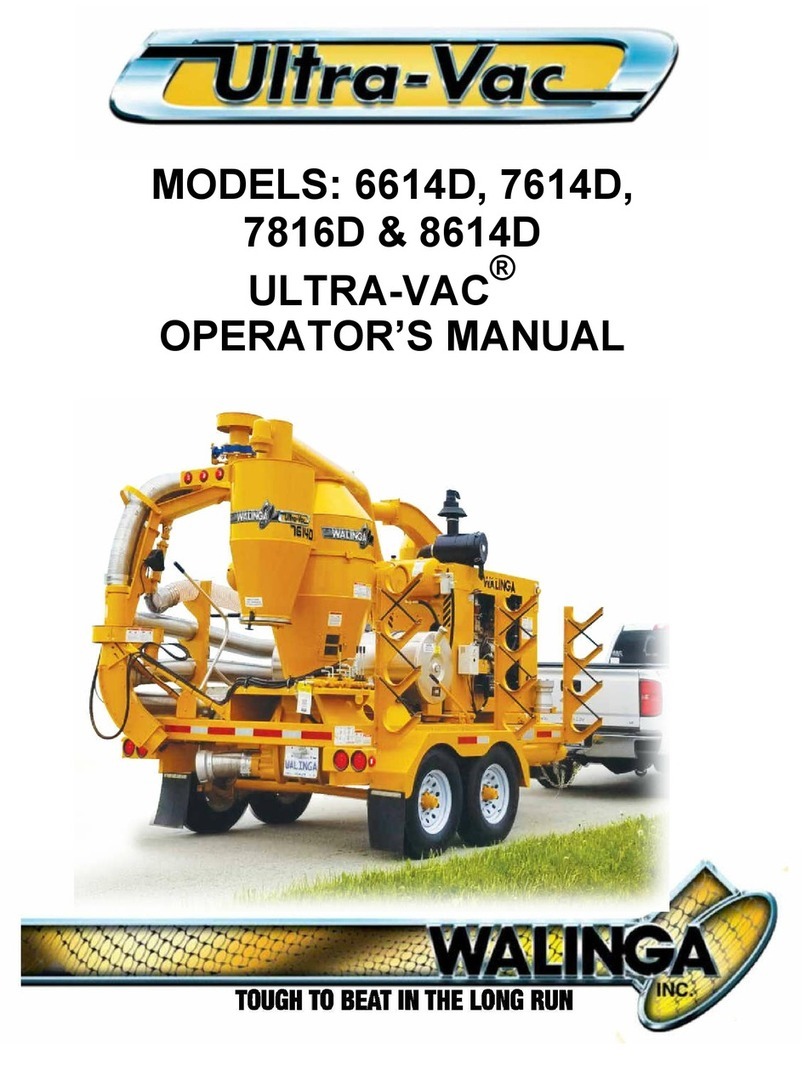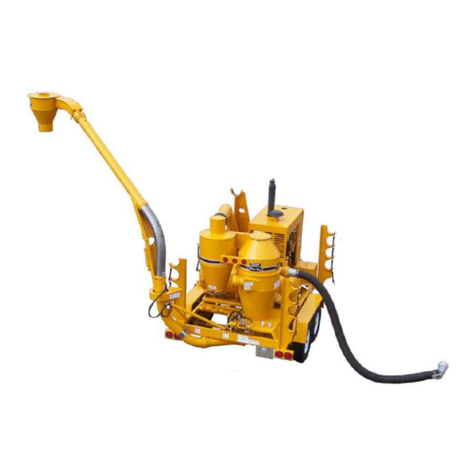
Overview
•This manual is a breakdown and walk through of Walinga's Central Vac System.
•It was created in order to generate efficiency and clarity in the set up of Central Vac
Systems.
•You will find a break down of all the components that are included in a Central Vac
system and how they come together as well as a break down of how the piping
system shall be installed.
•This manual will cover key points and procedures utilized in the construction and
installation of the central vac system.
•Every Central Vac piping system is original and built to suit the customer's needs.
Safety During the Installation of the Central Vac System (Refer to unit manual)
•Ensure that the blower and airlock have no power
and are locked out, before performing service work
on the Central Vac system. Failure to do so may
result in severe injury or death.
•Ensure that all chain guards or moving parts have
their proper guards installed, preventing injury.
•Wear the appropriate protective gear.
•Ensure that the Central Vac is anchored to firm and
level ground.
•Make certain that sufficient
amperage, at the proper voltage and frequency (60Hz) is available
before connecting power for the electric model. Have a licensed
electrician provide power to the machine. Always follow ANSI/NFPA 70
Standard and all local codes when providing electrical power.
•Have at least one extra person available to assist when elevating,
moving or connecting to other equipment.
•Wear appropriate protective gear while working on the Central Vac System.
•Once finished, give the machine a “once over” for any loose bolts, components, leaks,
faulty seals, and proper anchoring.
•Think SAFETY! Work SAFELY!
Key Items to Follow
•Follow Safety procedures.
•Ensure proper sealing of the mating components.
•Inlet placements in the piping.
•Use compression couplings and grounding strips at all joints.
•Keep piping as straight as possible.
•Keep all components within 400' of the Central Vac unit.
•Install Y elbows from the side or from the top of piping, and have the elbows follow the
flow of the air stream.






